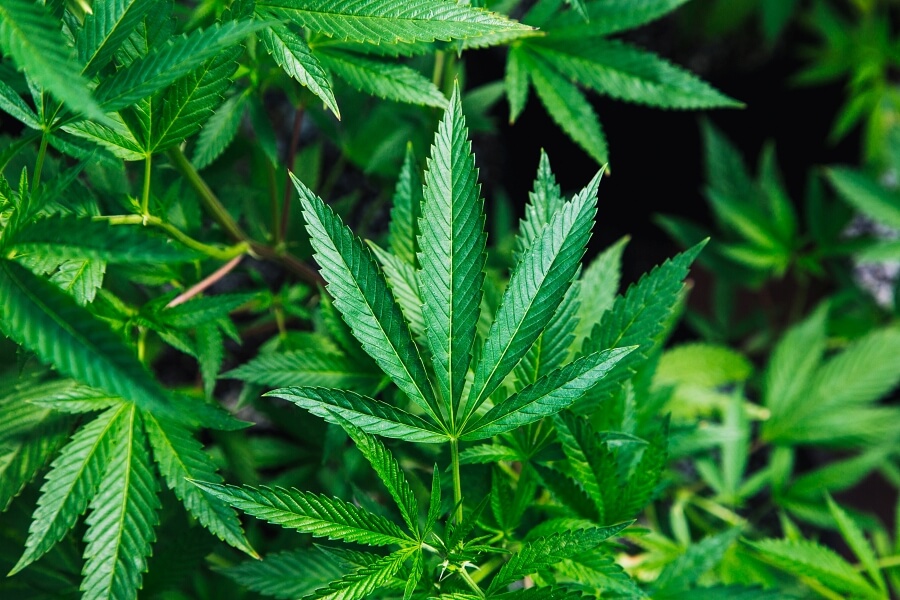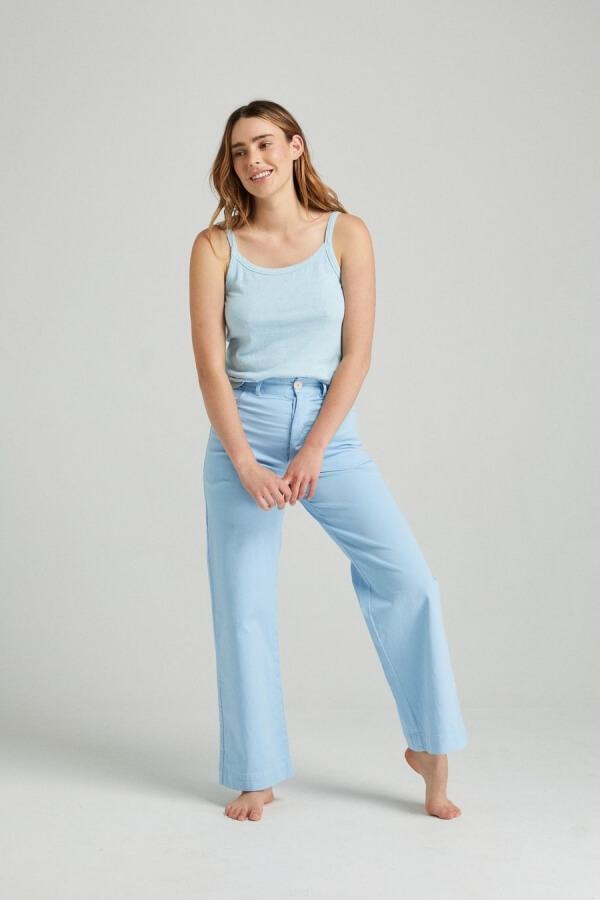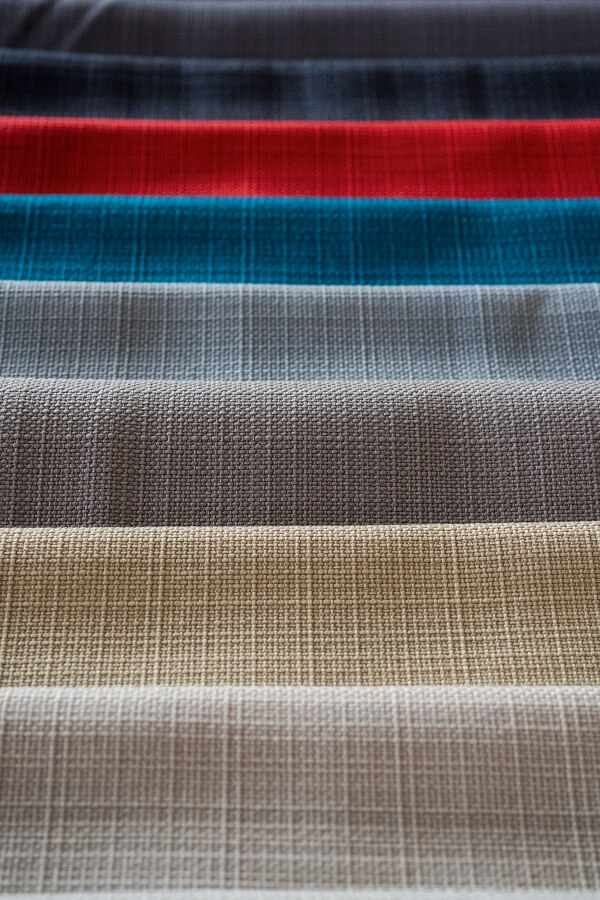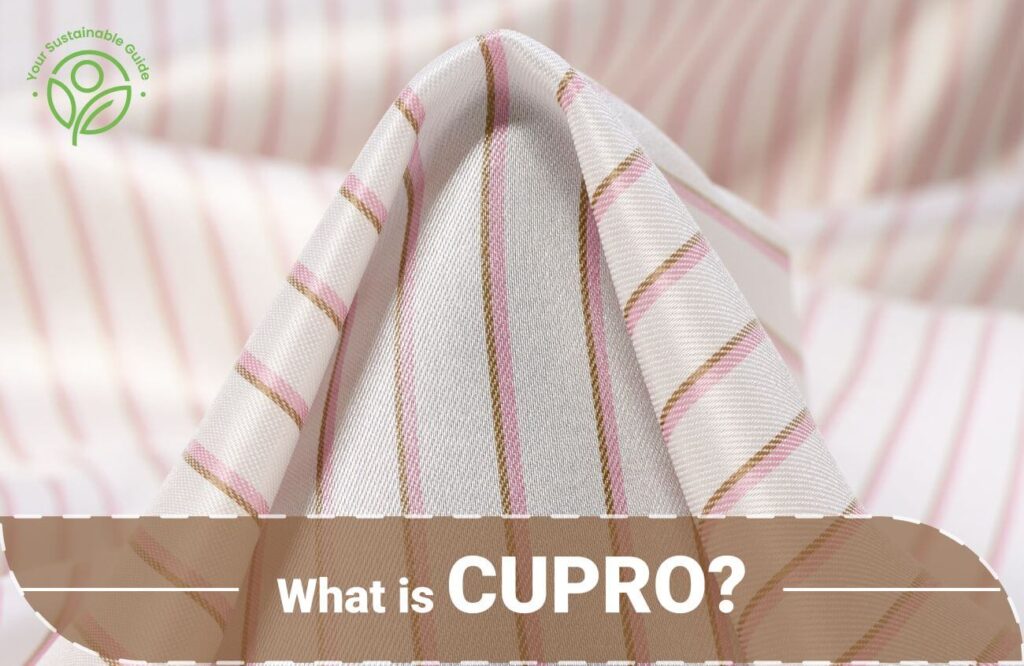Hemp fabric is ‘cool’ and a totally ‘in-vogue’ plant-based sustainable fabric! For all of you who don’t know what hemp actually is, Well drumrolls, please! Introducing Hemp, the ‘sober sibling’ of marijuana. Dope, right?
So while chances are high that you’ve been hearing about all the praises surrounding hemp recently, in reality, hemp fabric has been around humankind for eons. Hemp comes from a highly resourceful plant, ‘Cannabis Sativa’, which is not only responsible for biofuel, medicines, and food but is also one of the great fabrics used in slow fashion for making sustainable clothes.
Hemp has paved its way into various aspects of our lives, the history of which dates back thousands of years ago. It’s no wonder, that while watching a gripping documentary of an Egyptian mummy being revealed, you might have stumbled upon the fact that it’s wrapped in sheets of hemp. Yes! Just like linen hemp was a part of ancient civilizations in the Middle East along with Asia and China. Now that you’re more intrigued, sit back, and let’s explore this fabric deeper.
What is Hemp Fabric?
Hemp fabric is a natural textile made using fibers derived from the stalks of the Cannabis sativa (industrial hempplant). For millennia, this fabric is regarded for its durability, tensile strength, UV protection, and thermoregulation properties that help to stay cool in summer and warm in winter. However, the psychoactive (hallucinatory) attributes of the Cannabis sativa plant have somewhat restrained the production of this extremely beneficial crop.

Archeological pieces of evidence prove that hemp cultivation started about 10,000 years ago for medicinal purposes. However, hemp fabric development occurred during the Iron Age’s beginning. Majorly hemp cultivation spread and continued across Asia and Europe because of its medicinal and psychoactive properties.
Hemp was introduced to America at the onset of the colonial era, where it was successfully cultivated in Chile during the 16th century. Distinguished figures of American history, like Thomas Jefferson, George Washington, and Andrew Jackson, too indulged in industrial hemp cultivation.
Over centuries, Cannabis sativa has been harvested to fulfill two primary purposes. In one sense, this plant has been selectively bred for multiple generations, to contain high levels of psychoactive chemicals, such as Tetrahydrocannabinol (THC). Conversely, some cultivators bred Cannabis sativa to produce stronger, high-quality fibers and intentionally reduced the amount of psychoactive cannabinoids it produces. Therefore, now exists two distinctive varieties of the Cannabis sativa.
Despite the numerous benefits that hemp has, the global economy doesn’t gain from this plant because the production of hemp is fairly limited in supply. The reason is, people often stigmatize hemp as a drug resulting in laws around the world that don’t distinguish between the THC-rich marijuana and hemp whose THC level is negligible.
However, with time as multiple advantages of this plant are resurfacing, more and more countries are adopting the conventional cultivation of industrial hemp, which indicates that the revival of hemp fabric will soon be at its peak. The texture of hemp is similar to cotton and also somewhat like canvas. However, it is not vulnerable to shrinkage and is more durable than cotton because hemp fibers are long and sturdy.
How is Hemp Fabric Made?
The cultivation of hemp starts with planting Cannabis sativa plants in regions with mild climates and high humidity. On maturation, a special machine is used to harvest the hemp plants. After gathering, the hemp plants are left in the open fields for about 4-6 weeks to go through the process of ‘Retting’ via exposure to natural elements.
Next, the retted stalks are tied into bales, after which they go through the process of ‘Decortication’ where the fibrous outer section is removed from the woody interior with the help of hammer mills or breakers. Now, the fibrous woody core, also known as ‘bast fibers,’ are carded (combed through) into long strands, followed by a cleaning step to remove dirt, lignin (a natural polymer present in woody fibers), and other impurities. These sturdy strands of hemp fibers are now ready to be used as a base material for various industrial uses.
For example, at this point, some manufacturers may ‘pulp’ the base material to produce paper products, while others may ‘matt’ the hemp fibers to make mats and fleeces. On the other hand, clothing manufacturers carry out the ‘steam explosion’ processing of the raw hemp strands to convert them into weavable fiber, which is ready to be spun and woven into various textiles.
Currently, with 70% production China is the most prominent producer and exporter of the world’s hemp fabric, followed by France in the second position.
Is Hemp Fabric Sustainable?
Yes, hemp fabric is entirely sustainable, which is why its production continued for thousands of years. It is biodegradable, renewable, and grown organically because Cannabis sativa or industrial hempplants do not require chemical fertilizers or pesticides to thrive. In addition, the water consumption of hemp plants is way less than cotton.
According to a study by the Stockholm Environment Institute, producing 1kg of hemp requires around 300 and 500 liters, whereas 1kg of cotton production soaks up about 10,000 liters of water.
Hemp is also a high-yielding plant that requires low resources. It is used not only for producing fabric but, in fact, parts of the entire plant are used by various industries to make food, biofuel, medicines, etc. Hence, no wastage.
Amongst other eco-friendly benefits, hemp is actually a ‘self-offsetting crop’, meaning these plants absorb more CO2 from the atmosphere than most forests, because of which industrial hemp farms are often referred to as ‘carbon sinks.’

Is Hemp Fabric Affordable?
Hemp fabric is more expensive than cotton. Hemp, linen, and cotton share similar properties but hemp remains to be more expensive than both these natural fabrics because it is quite limited in supply.
Producing hemp fabric is actually more efficient and eco-friendly than cotton. Still, this fabric has become an expensive natural fiber because of various market factors like unreasonably inflated prices because of its exclusivity and restricted production owing to the misconceptions surrounding industrial hemp’s psychoactive property.
So until worldwide regulations around cultivating hemp change and it is accepted as a more sustainable alternative to cotton, the high price is likely to continue.
Hemp Fabric Certifications
Organic Hemp can be certified by the United States Department of Agriculture (USDA).
Properties of Hemp Fabric

- Hemp is an all-natural fiber because of which it is fully biodegradable.
- It can be easily recycled.
- Hemp fabric has good absorbency.
- It is anti-bacterial.
- Hemp is high on breathability and keeps the wearer cool and comfortable.
- It is hypoallergenic, just like most organic fabrics.
- Hemp is a highly durable and long-lasting fabric.
- It blocks harsh UV rays and protects the wearer from sun damage.
- With every wash, hemp clothing gets more breathable and softer.
Pros & Cons of Hemp Fabric
Pros of Hemp Fabric:
- Hemp is 100% biodegradable.
- It is naturally antimicrobial and resistant to pest attacks like moths, mildew, etc.
- Hemp has tensile strength and is one of the most durable natural fibers that can last decades.
- Hemp is exceptionally breathable.
- It has good moisture-wicking attributes, keeping the wearer fresh and dry.
- Hemp fabric doesn’t shrink.
- Hemp has anti-bacterial properties.
- Hemp clothing can block up to 95% of the harsh ultraviolet rays.
- As hemp gets older, it gets softer and more breathable.
- Hemp fabric can be easily recycled.
- It returns nutrients to the soil where it is grown.
- It is anti-allergic and suits all skin types.
- Hemp plants absorb more Carbon Dioxide (CO2) than most trees.
- Hemp is one of the most sustainable fabrics because it consumes less water and doesn’t need pesticides for growth.
Cons of Hemp Fabric:
- Hemp fabric can wrinkle easily.
- It is tougher and has superior durability because of which hemp fabric’s texture is not as soft and smooth as cotton and linen.
- Hemp is quite expensive than most organic and synthetic fabrics.
- Usually hemp-based clothing are of basic designs and has fewer color options.
- Hemp fabric needs to be bleached to make it more usable as it isn’t as white as cotton and has a particularly woody odor.
Uses of Hemp Fabric

- Hemp fabric is used in making apparel like dresses, shirts, trousers, jackets, t-shirts, inner garments, sweatshirts, kids’ clothing, etc.
- For other textile uses, hemp fabric is used to make tablecloths, upholstery, bedsheets, pillowcases, blankets, throws, dish towels, etc.
How to Care for Hemp Fabric
How to Wash Hemp Fabric
- Hemp clothing should always be hand-washed or machine-washed in a gentle cycle using a mild or hemp-specific laundry detergent.
- Always use cold or normal-temperature water for washing.
- Hemp fabrics require bleaching. Always use oxygen bleaches instead of harmful chlorine bleaches.
How to Dry Hemp Fabric
- Hang your hemp clothing to line-dry naturally.
- In case of using a dryer, make sure to remove your clothing before it gets too hot and dry, as that might damage your hemp pieces.
How to Iron Hemp Fabric
- Always iron your hemp items when they are still damp.
- Turn the clothing inside out and start ironing by keeping the setting at a medium temperature. Increase to a high heat setting if required.

Famous Brands That Use Hemp Fabric
- Tentree
- Toad&Co
- prAna
- Outerknown
- Afends
- VALANI
- LANIUS
- Back Beat Co.
- Opera Campi
- Patagonia
- WAMA
- Vege Threads
- A.BCH
Best Alternatives to Hemp Fabric
Cotton- Cotton has a similar level of comfort and share most of the properties as that of Hemp. Hence cottton and hemp can be easy substitutes for each other. Organic cotton is a certified types of cotton that is grown in tropical regions without pesticides and has less water consumption, much like hemp. Besides organic cotton is more affordable and also available in comparison to hemp.
Linen- Just like hemp, linen is one of the oldest and most sustainable natural fabrics known for its durability and breathability along with many other benefits that these two fabrics share. Completely organic in nature, linen has a similar texture to hemp and can be its perfect alternative. However, both linen and hemp stand at a similar price point since production of both these fabrics are limited.
A Final Word….
Hemp is an amazing natural fiber that ticks off all the criteria of an eco-friendly fabric. However, despite this fabric’s long history and a plethora of sustainable uses, the world is still getting a limited taste of it. The Cannabis sativa plant is a prey of bad reputation because most people confuse marijuana with hemp and legislation had further restricted the production of this crop leading to a limited supply.
The Good News! Times are changing. In places like Canada and the United States, the stigmatization of marijuana is already fading due to legalization of recreational marijuana and recognition of hemp’s sustainable benefits. We’re hopeful that coming years would make this fabric more widespread and affordable. Kudos to a ‘Hempowered’ sustainable future.







